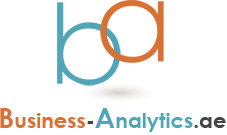
October 22nd 2025

Prescriptive Analytics: Making Optimized Decisions about the Future

What is Prescriptive Analytics?
Prescriptive analytics optimizes decision making to show companies what actions to take in order to maximize profitable growth, given their business constraints and key objectives. The most advanced in the spectrum of business analytics, prescriptive analytics is able to make the most impact on large scale business objectives, e.g., increasing profit, decreasing COGS, increasing service levels and improving decision-making agility.
Business Analytics is critical to managing and optimizing enterprise performance — whether it’s the ability to quickly spot new trends, predict the behavior of key variables or support critical operational, tactical and strategic decisions. It is composed of three types of analytics: descriptive, predictive and prescriptive. As companies progress their use of Business Analytics, they derive exponentially more value — especially as their orientation shifts from historical to forward-looking.
A Deeper Dive into Prescriptive Analytics
Prescriptive Analytics translates a forecast into a feasible plan for the business, and helps users identify the best steps to implement. There are two primary approaches – simulation and optimization.
Simulation is best used in design situations, where it helps users identify system behaviors under different configurations, and ensures all key performance metrics are met (e.g. wait times, queue length, etc.). Optimization supports ongoing operational, tactical and strategic business planning; it leverages linear programming to identify the best outcome for a business, given constraints and objective function.
When applied to broader tactical (e.g. S&OP or Integrated Business Planning) or strategy planning scenarios, the optimization model is used to calculate the impact of various forecasts (some from predictive analytics engines) on the business. It does so while also taking into account operational realities in the form of constraints. Constraints include:
- Capacities in the form of headcount or production
- Regulatory requirements
- Emissions
- Financial limitations; borrowing or working capital).
Advanced optimization models combine the value chain (including key constraints) with financials, to provide much higher quality information than a BI or predictive model can alone – in the process, ensuring internal data consistency and identifying infeasible outcomes. In addition, they support unique analyses, such as contribution margin, activity based costing and pro-forma financial statements, which help users find and execute optimal decisions.
src: riverlogic.com




